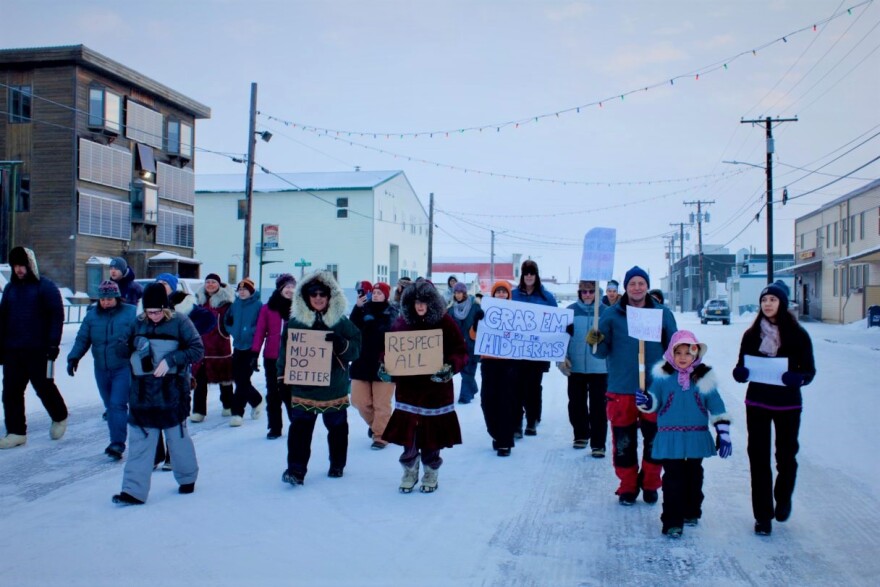From Anchorage to Unalaska, Kodiak to Cordova, Alaskans took to the streets over the weekend for the second-annual Women's March. The march came on the one-year anniversary of President Donald Trump's inauguration.
Marchers said they came out to protest the president's agenda - even in a state that gave Trump 51% of the vote in 2016.
On a clear, cold day in downtown Anchorage, civil rights activist Shirley Mae Springer-Staten belted into the microphone in front of her.
At first, the crowd of hundreds was hesitant to sing along.
"So your part is simply, 'Turn me 'round.' Can you say that back to me?" Sprinter-Staten asked?
The crowd obliged.
"That was a good start," Springer-Staten said encouragingly.
Events like this were held across the state. In Nome, people in fur-lined parkas marched down Front Street.
“I think it’s been a hard year for a lot of folks," Nome resident Nikki Braem said. "Some of the events have been dismaying, but there’s hope," Braem said.
That idea of hope and positivity was echoed by Nome's Marty Ruud.
“My philosophy is that there’s more good people than bad people," Ruud said at the march. "So people need to examine their conscience and vote their heart, and let’s turn this around.”
Snow fell on the 140 people who chanted, "We're here, we're strong, we vote," through the streets of Kodiak.
Robin Corcoran carried the same sign she brought to last year’s march. It read: “Make America Kind Again."
“I think a lot of people who maybe thought that Donald Trump meant a change are seeing that it was a change for the worse," Corcoran said. "So if we vote we can hopefully make a change.”
Marchers in Unalaska went a step beyond that, with volunteers like Tammy Pound helping people register to vote.
“I’m hoping that a lot more women run for office," Pound said. "That’s how we’re going to get things done.”
Before the 2016 election 1,000 people had contacted Emily's List about running for office. The political action committee aims to get more pro-choice Democratic women elected. Since the election, that number has grown to 26,000 women.
Rachel Lord was one of those women inspired by the 2016 election.
"Last summer I decided to run for Homer City Council," Lord told the crowd in Homer. "I realized that if I wasn't willing to sit at the table others would be, and I believe in local government. I believe in the process. I believe in our democracy."
The biggest crowd to march in Alaska was in Juneau, where close to a thousand people gathered outside the state's capital.
“I think we had more people than we thought might show up with such little advance notice, and so many young people," the march's emcee Sara Hannan explained. "To women of the retirement age, it is good to see the baton being passed and the willingness to take up the fight.”
There was a similar shout out at the Women's March in Sitka, which drew about 300 people to the streets.
Organizer Kathy Ingallinera thanked everyone for coming out.
"Especially the youth, the teenagers-- it's really important for you guys to get involved," Ingallinera said.
Back in Anchorage, the chorus of voices kicking off the march grew louder. There was a buzz in the air, like the women in the audience knew their voices were finally being heard.
This story had reporting help from KNOM's Gabe Colombo in Nome, KMXT's Mitch Borden in Kodiak, KUCB's Zoe Sobel in Unalaska, KBBI's Renee Gross in Homer, KTOO's Adelyn Baxter in Juneau and KCAW's Emily Kwong in Sitka.




